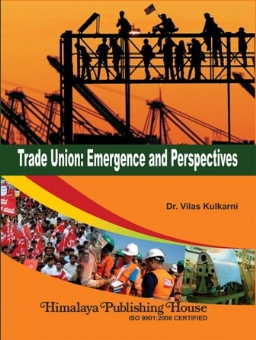If the eagle view is applied, the Trade Union movement has been travelled through three phases: (a) before Independence, (b) after Independence and (c) today, i.e., after globalization of 1991. Before independence, the Trade Union was suppressed by landlords, employers. Due to their victimization, the struggle against the owner class of people was started. Government was compelled to pass Trade Unions Act in 1926. From 1926 till 1947, this phase of Trade Union can be described as survival phase. After independence and emergence of Factories Act 1948, Dock Workers Act of 1948, Plantation Act of 1951 and Mine Act of 1952, the labour unions became more aggressive. “Might is right” the slogan was preached and followed among labour unions, Collective Bargaining concept was received momentum and labour union received new name in industrial scenario as “striking communities”. To protect their interest, our government passed many labour legislations in India. After globalization of 1991 when foreign countries were allowed and encouraged by our government to enter into the business, many foreign companies started their business in India. Trade Union and the domestic employers realized the threat in the business. The Trade Union now decided to change their face values. Present Trade Unions are intelligent and educated. The leadership is learned and qualified. They are having matured vision. Collective bargaining is strength of present Trade Union and it has social status in society. This phase now is called as progressive phase of Trade unions.
Since last two decades, all over the world, especially in India the once unshakable faith in union, labour movements and labour parties has been changed dramatically. Concept of solidarity of the workers and working classes no longer have much meaning in a world where market forces have left behind socialist planning. One can say that, while it would be premature to state that the death of Trade unions is imminent, it is equally true that the unions will have to re-orient their aims, approach and style to suit the changed situation.
This book covers with total 10 chapters. The first chapter deals with preliminary information about Trade Union, its meaning, objectives, characteristics, approaches and how the Trade Union movement was initiated in India. The second chapter deals with how is and was the status of Trade Union movement in foreign countries like USA, USSR, Great Britain, etc. The third chapter focuses on different roles and functions the Trade Union performs for various segments of society including members, management and government. The fourth chapter guides to management student how collective bargaining is having its own significance and importance. The fifth chapter deals with various problems and perspectives of Trade Union whereas sixth chapter deals with Trade union’s contribution for organized as well as unorganized sector of India. The seventh chapter focuses on how important of workers’ education and training to improve the overall effectiveness. Whereas eighth chapter throws total light on Central Government’s legislation in favour of Trade unions which is known as Trade Unions Act of 1926. Ninth chapter focus as various special symptoms of Trade Union like Trade Union and its role in public relations, interrelation of Trade Union with ILO, the concept of Trade Union and democracy, Trade Union and its election, Trade Union and Trade Union and its funds and most important that the Trade Union and its leadership. The last tenth chapter deals with how the changing scenario has impact on Trade Union working and behaviour in pace with globalization.
Contents :
Chapter 1 Preliminary Information about the Trade Union
Chapter 2 Trade Union in India and in Foreign Countries
Chapter 3 Role & Functions of Trade Union
Chapter 4 Trade Union and Collective Bargaining
Chapter 5 Problems and Perspectives of Trade Union
Chapter 6 Trade Union in Organized and Unorganized Sectors of India
Chapter 7 Workers’ Education and Training
Chapter 8 Trade Unions Act, 1926 (Act No. 16/1926)
Chapter 9 Trade Union and its Special Symptoms
Chapter 10 Changing Scenario of Trade Union with Respect to Globalization
Summary of Trade Union Emergence and Perspectives
Sample Question Papers







